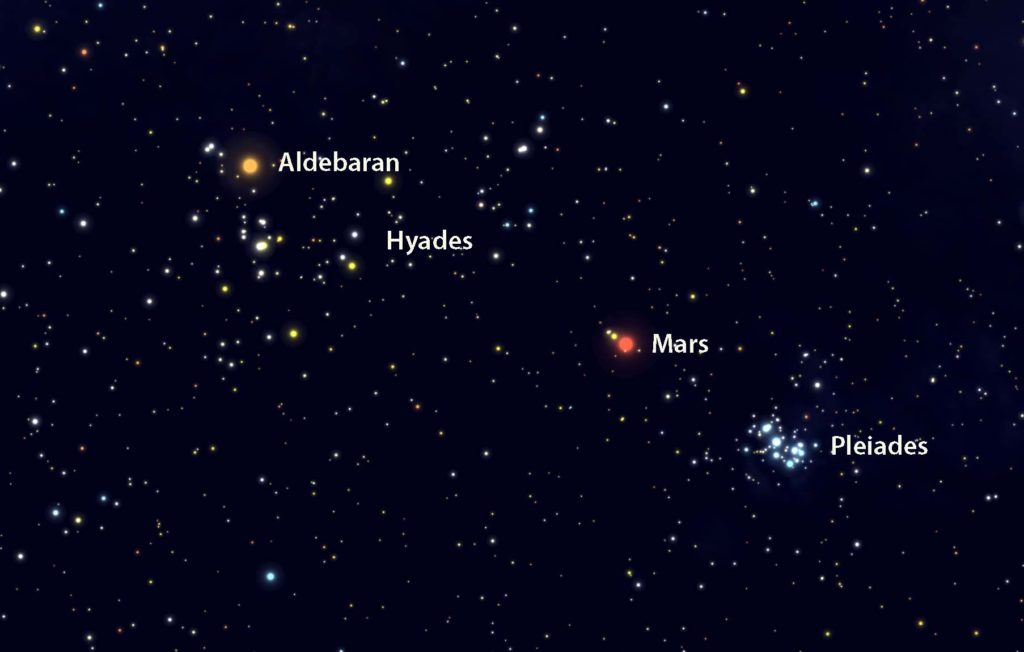Sky Report: March 1 – March 7

Mars remains the sole planet in the evening sky. It’s in the news as craft from several countries go into orbit around it and land on its surface, and you can see Mars as one of the brighter “stars” high in the southwest as darkness falls. A short distance to the left, or east, of Mars is an orange star that is equally bright – Aldebaran, in Taurus. Mars is approaching Aldebaran and they’ll be closest in a few weeks.
Enroute to Aldebaran, Mars passes between two pretty star clusters – the Pleiades, or Seven Sisters, on the right, and the Hyades on the left. Mars is closest to the Pleaides on the night of the 2nd when they’re separated by 2-2/3° and a pretty sight in binoculars, but they’ll be close enough to see together in binoculars until roughly the 11th, depending on your binoculars’ field of view, and it’s a good photo op for people with a telephoto lens that tracks the stars.
The cluster to left of Mars is the Hyades, which is larger and closer. Mars is directly between them on the 7th but it’s broadly between them all week. Aldebaran is in front of the Hyades and not part of them.
Turning to the morning sky, Mercury, Jupiter, and Saturn rise before the sun, but they’re so low in morning twilight that you will need binoculars to see them. It would be worth the effort as Mercury passes very close to Jupiter from about the 2nd through 7th with closest approach on the 5th when they’re a scant ½° apart. Mercury is 1/5th as bright as Jupiter. Saturn is 9° to the right of Jupiter, but it is only 1/12th as bright as Jupiter. Look a half-hour before sunrise and you’ll need an absolutely flat eastern horizon. As I always insist, every amateur stargazer needs a pair of binoculars; I recommend 7X50 and you can find a decent pair for under $50. While looking for the planets on the morning of the 5th, notice the bright orange star less than 5° below the moon; that’s Antares in Scorpius. Scorpius is very much a summer constellation. Although we’re still officially in winter, you see stars of the coming seasons late at night. Jupiter and Saturn are in the morning sky now but they’ll be in the evening sky this coming summer.
The Sky Report is presented as a public service by the Stellar Vista Observatory, a nonprofit organization based in Kanab, Utah, which provides opportunities for people to observe, appreciate, and comprehend our starry night sky. Additional information is at www.stellarvistaobservatory.org. Send questions and comments to
John@StargazingAdventures.org.






Comments are closed.